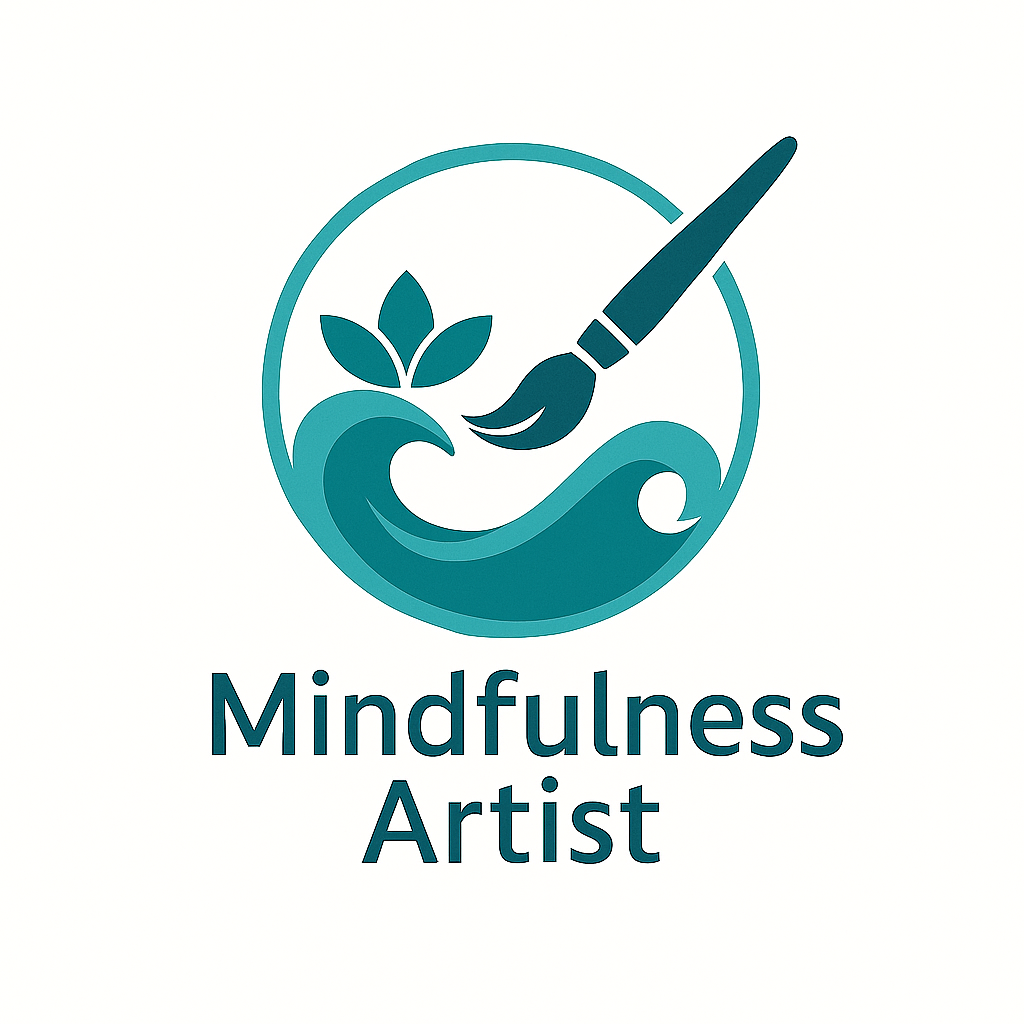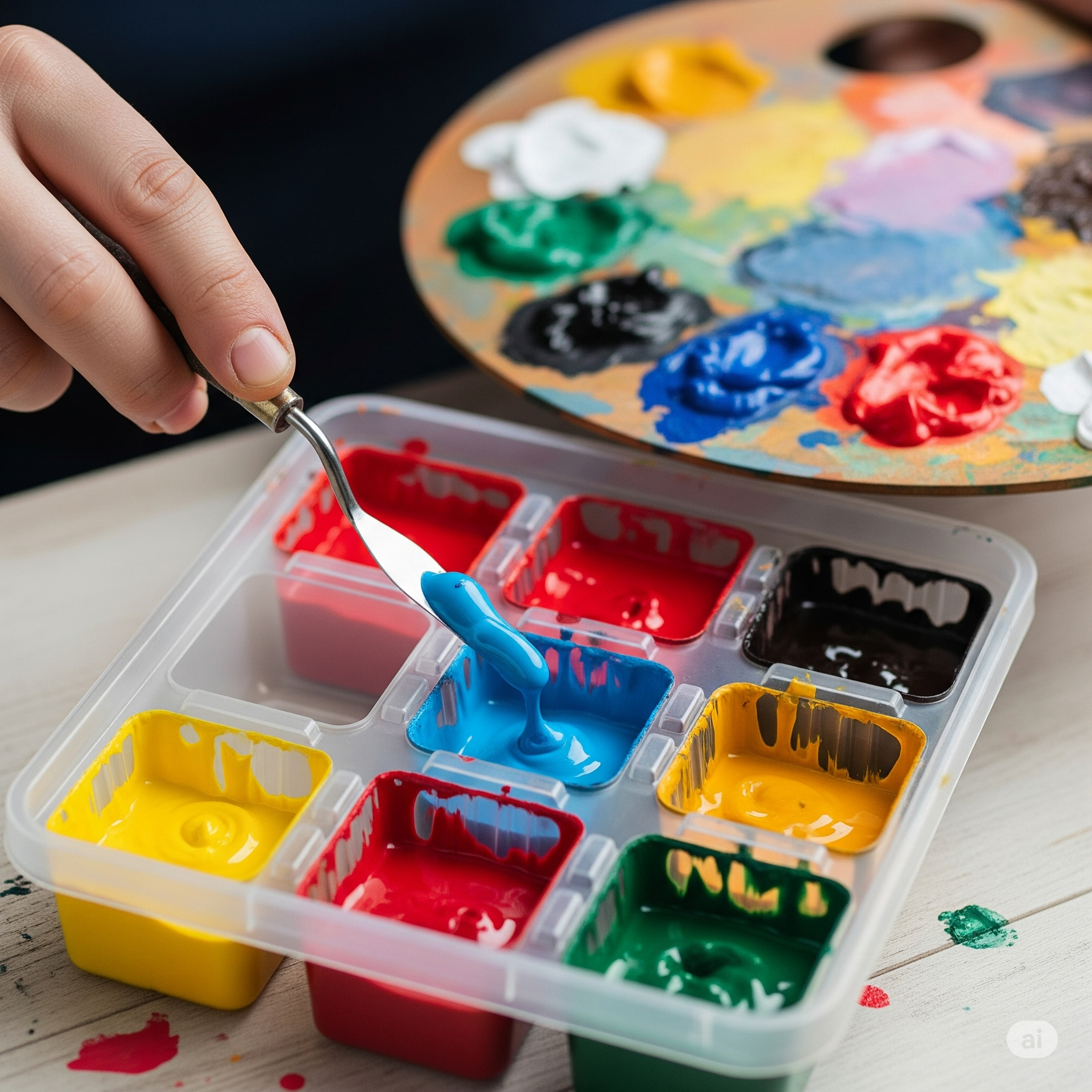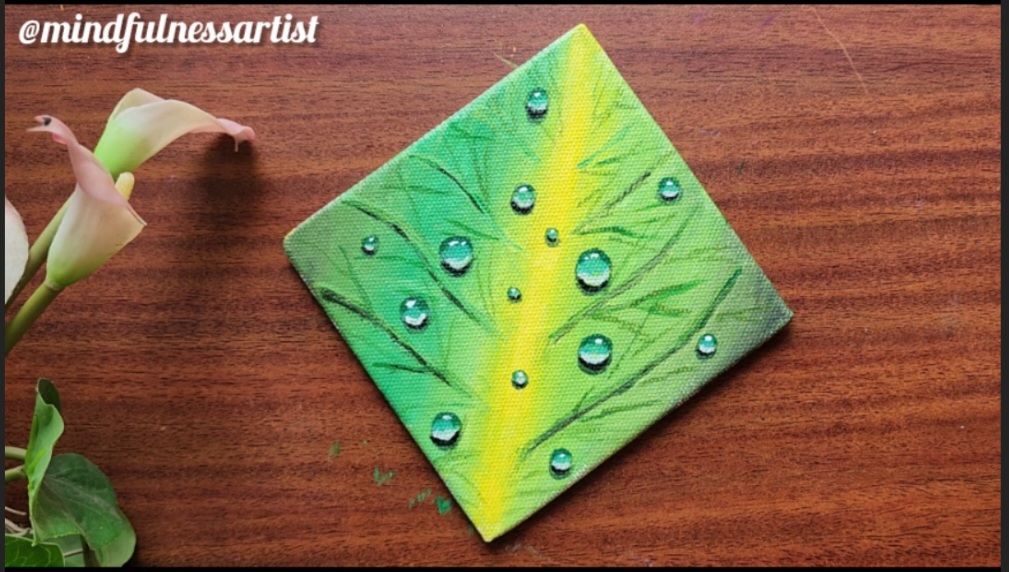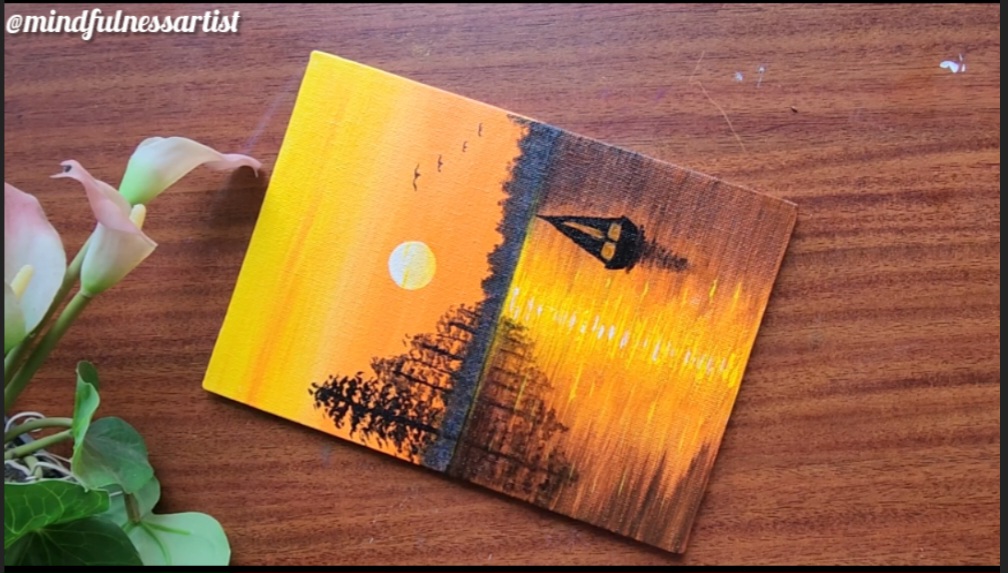
There’s a beautiful moment each day when the sky and water merge into a breathtaking display of color. Get ready to capture the warm, vibrant energy of a sunset on your canvas. This project is a fantastic way to practice blending techniques and create a sense of depth and realism, making the scene come alive. So grab your brushes, and let’s create a masterpiece that radiates with the magic of a fading day!
We’ll be using a 5×7 canvas board, a variety of flat and round brushes, and a palette knife. The colors we’ll need are Lemon Yellow, Cadmium Yellow Deep, Cadmium Orange, Burnt Sienna, Black, and White. Don’t forget a bowl of water to keep your paints flowing smoothly!
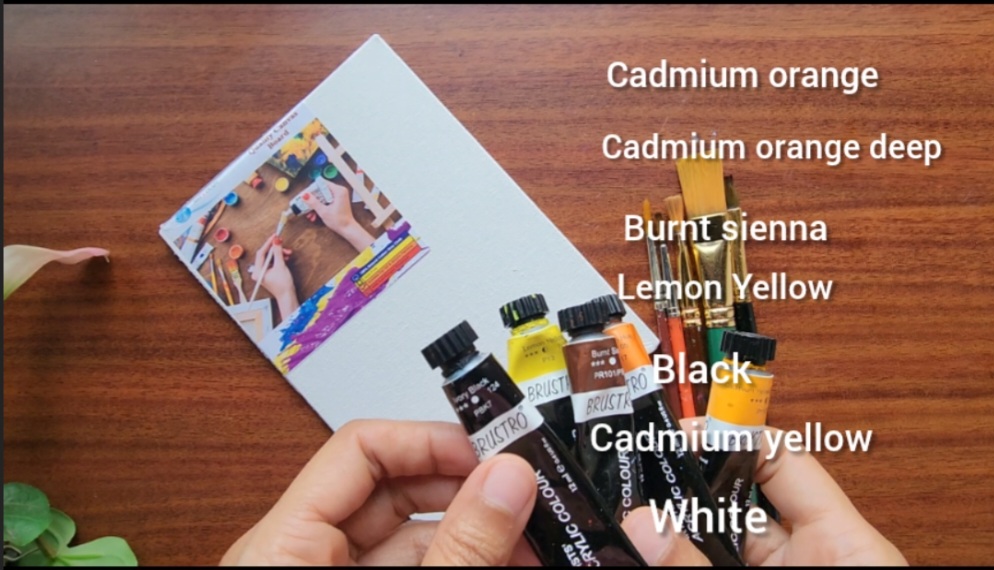
Step-by-Step Sunset Painting
1. Creating the Sky:
Start by applying Cadmium Yellow, Cadmium Orange Mid, and Cadmium Orange Deep to the top half of your canvas. Use a flat brush and horizontal strokes to blend them together, adding more deep yellow as you go. This will create a beautiful gradient for the sunset sky.
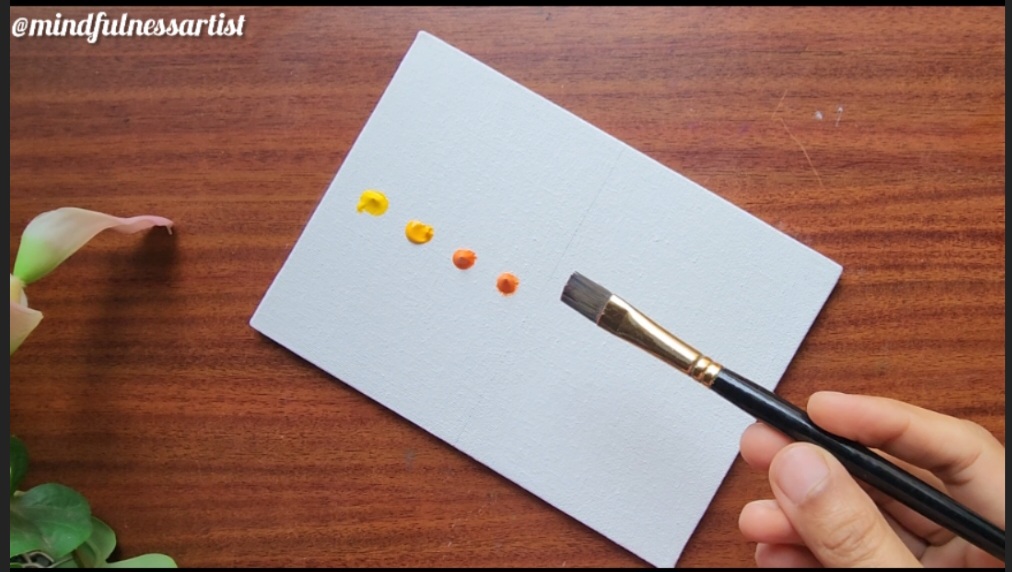
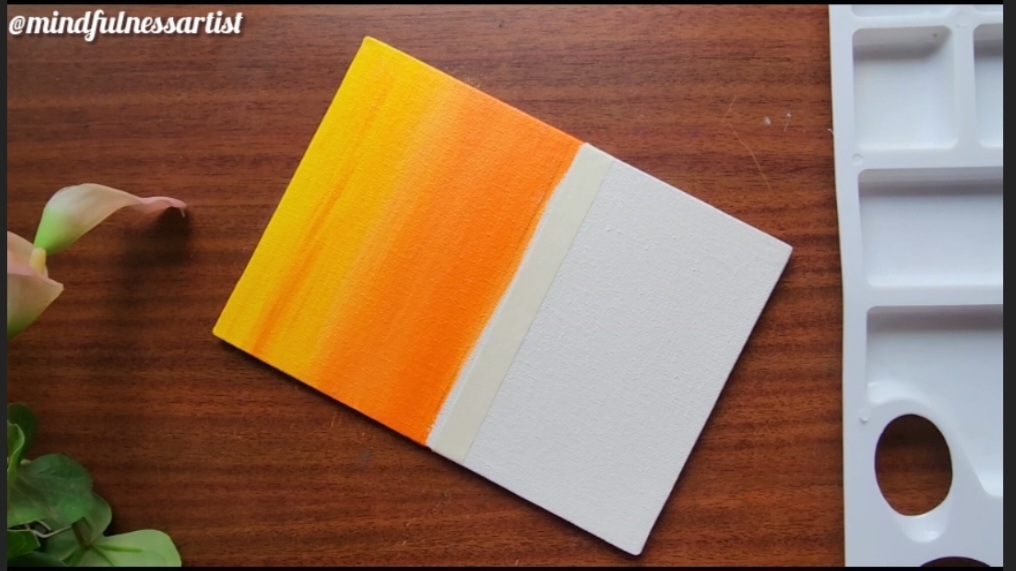
2. The Horizon Line and Distant Trees:
Place a masking tape horizontally across the middle of the canvas to create a clean line. Mix a pinch of black with cadmium orange to create a dark color for the distant trees. Using a filbert brush and more black paint, create a distant tree effect along the horizon line.
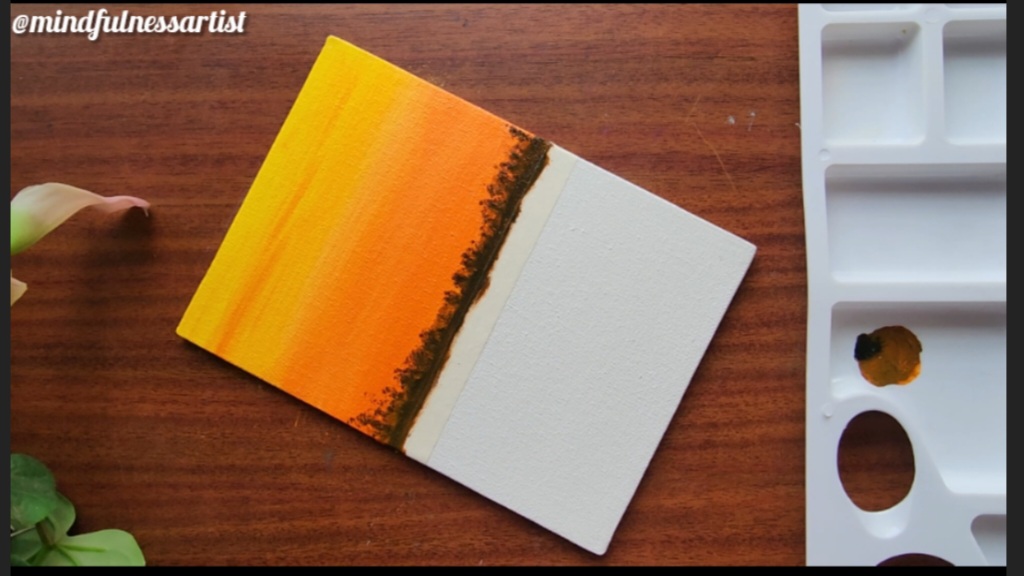
3. Painting the Sun:
For the sun, use a ruler with circles to draw a perfect shape. Fill it in with white paint. Add a layer of lemon yellow to the bottom half of the sun and blend it with the white. Once the paint is dry, you can add another layer of white to the top half of the sun to enhance the glowing effect.
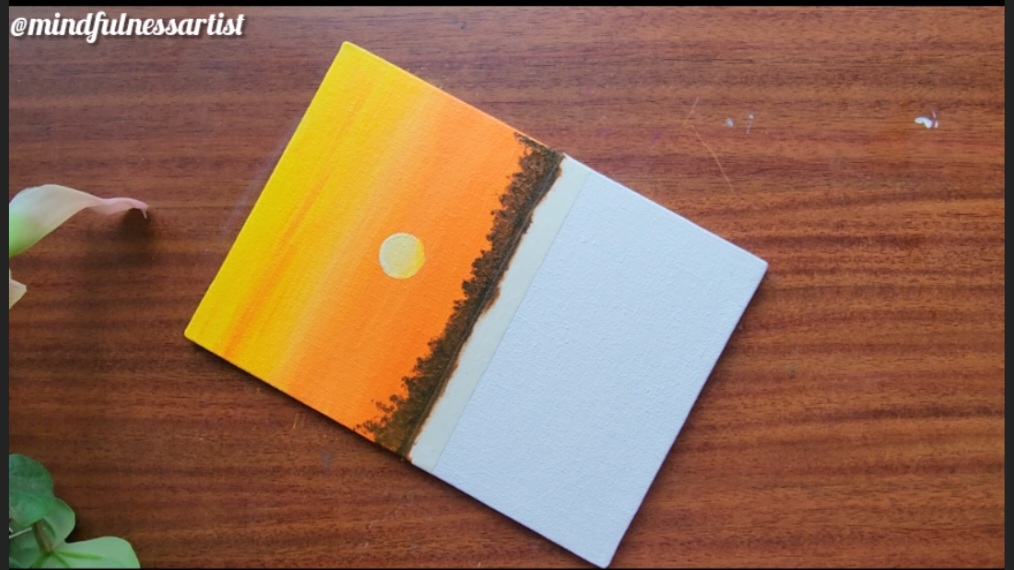
Step 4: Painting the Trees
Now it’s time to add the trees. Using black paint, I’ll create the silhouettes with a filbert brush.
The filbert brush gives a great texture for the tree shapes, so I’ll be using that for this step.
I’ll add one more layer of white to the upper half of the sun, blending it with the yellow below, to make it even brighter and more prominent against the darker sky.
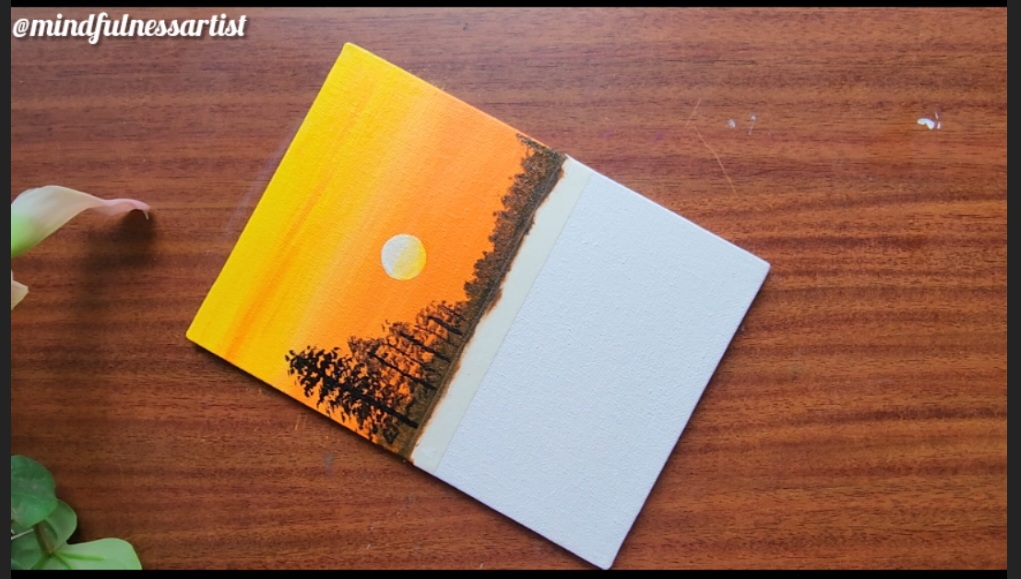
5. Painting the Water Reflection:
Start by adding cadmium yellow to the middle of the bottom half of the canvas, followed by cadmium orange, cadmium Orange deep, and finally burnt sienna. Use a flat brush to blend these colors with horizontal strokes. If your paint feels dry, a little water on the tip of your brush will help it glide smoothly. Add more burnt sienna to the sides for a darker, more dramatic effect. Blend all the colors together . For even darker areas, mix a touch of black with burnt sienna and blend it into the sides.
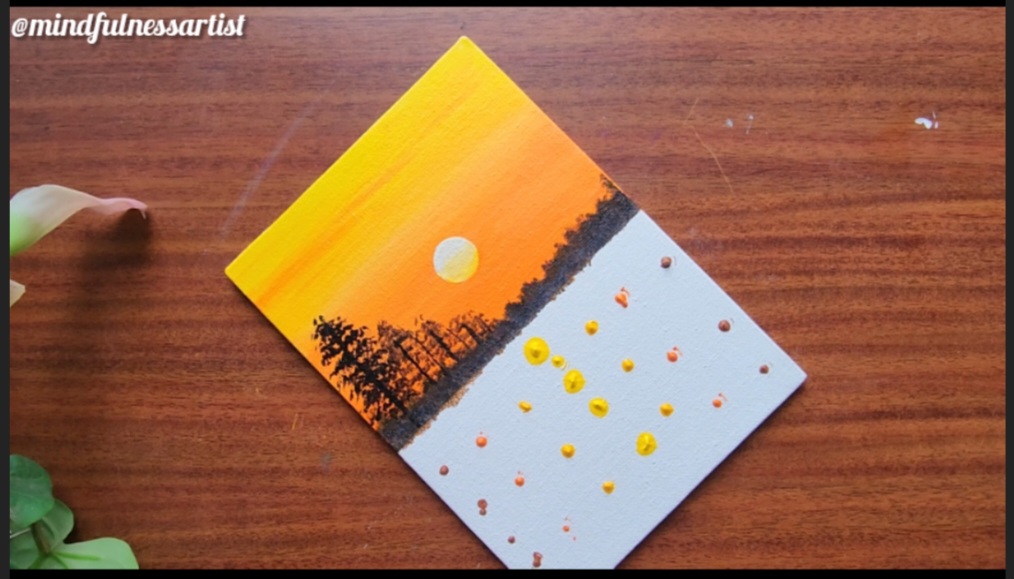
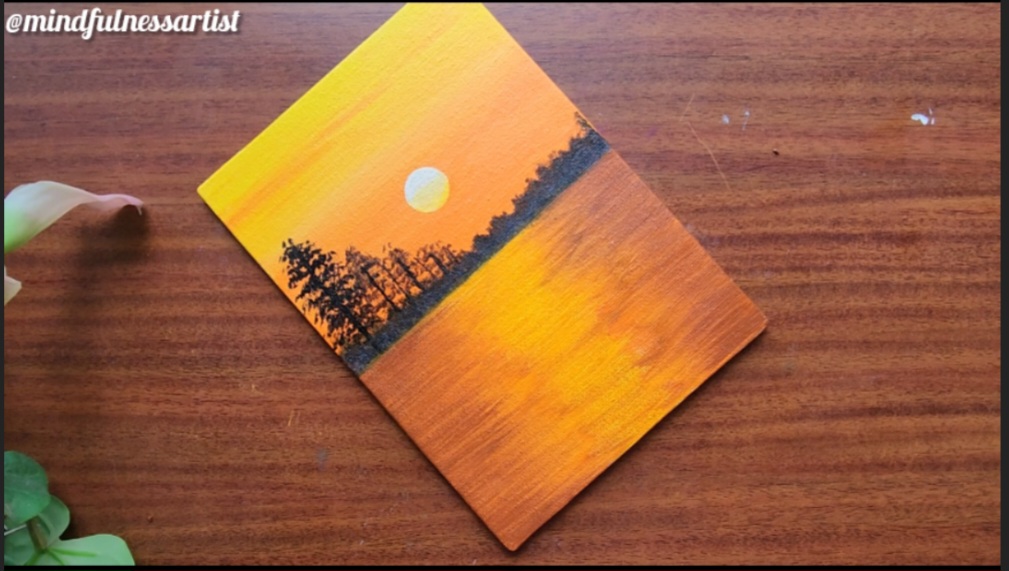
6. Water Highlights and Shadows:
Using a palette knife, apply cadmium yellow in the middle of the water area to create the sun’s reflection. Add a layer of white paint on top of the yellow for a bright highlight. For the tree reflections, use black paint diluted with water to create a slightly blurry, shadowy effect.
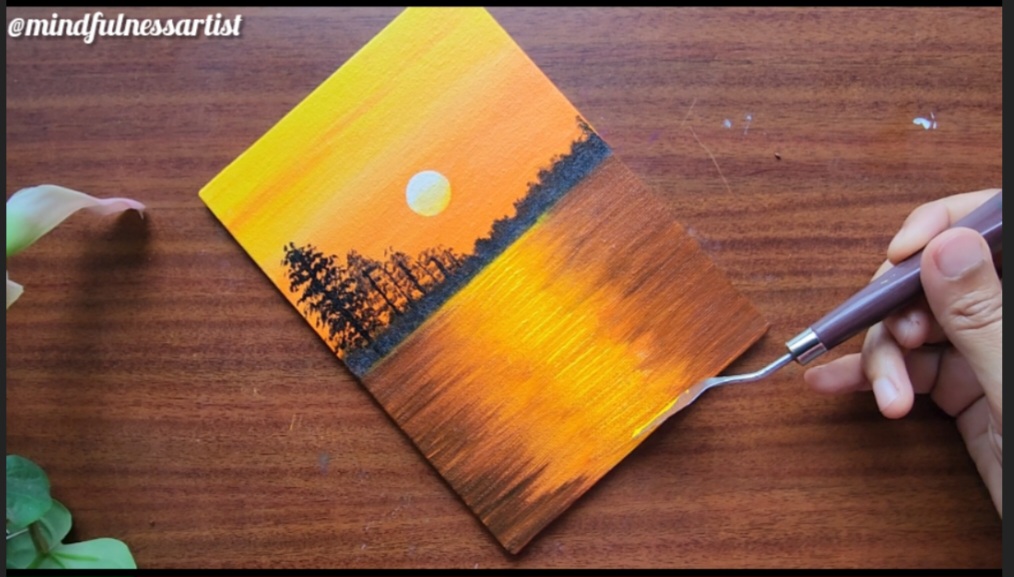
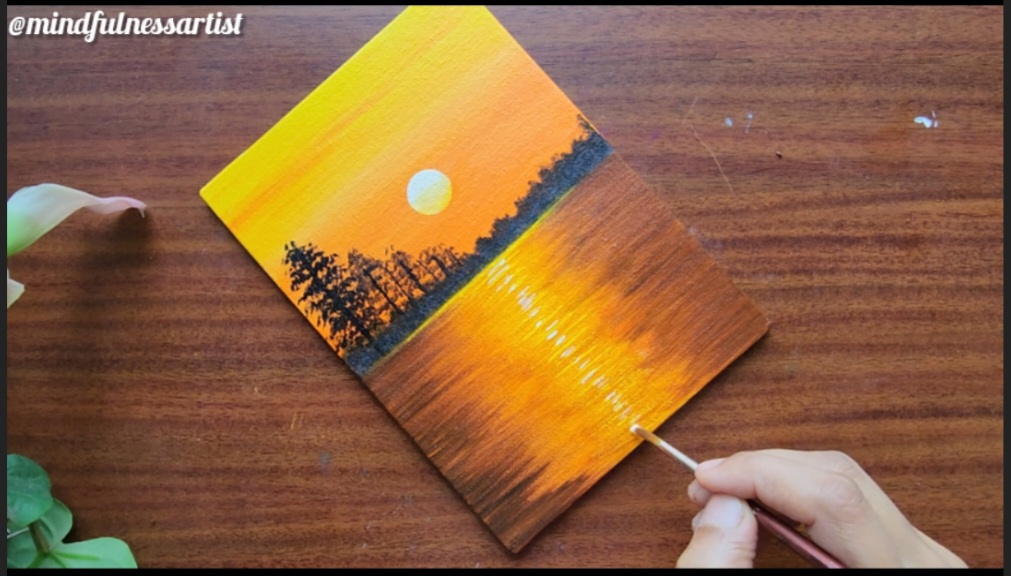

Step 7: Adding the Boat
- Now, let’s add a boat to our serene water. Using black paint and a fine round brush, I’ll paint a simple silhouette of a small sailboat.
- To make the boat look like it’s truly on the water, let’s add its reflection. Using diluted black paint and a fine brush, paint a vertical mirrored image of the boat directly below the actual boat.
- Keep the reflection slightly blurry to mimic the water’s surface.
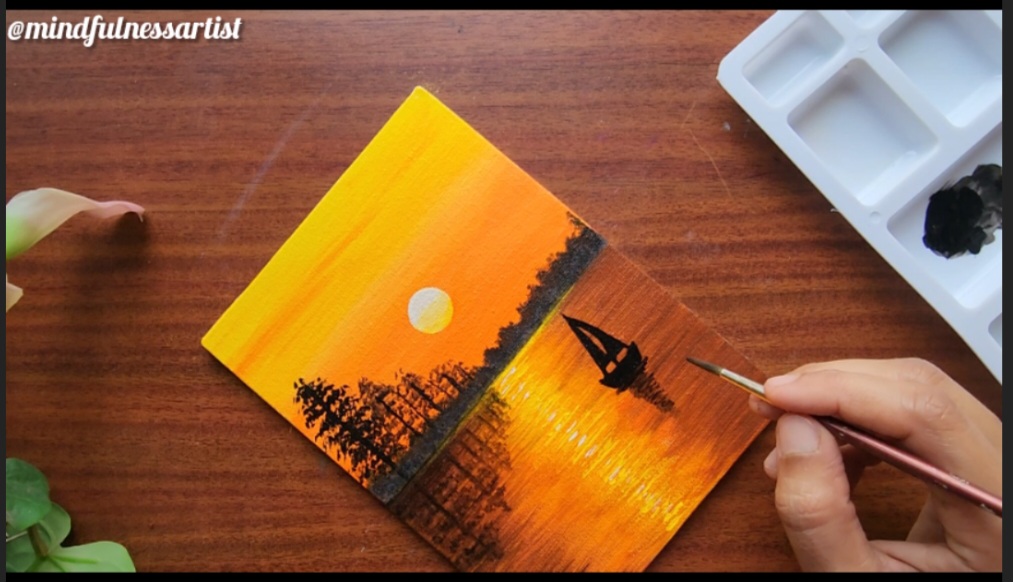
Step 9: Adding Birds
- To add a sense of movement and life to the sky, let’s paint a few birds flying in the distance.
- Using black paint and a fine brush, paint small, simple ‘V’ shapes or slightly curved lines in the sky, near the sun. Vary the size and placement to make them look natural
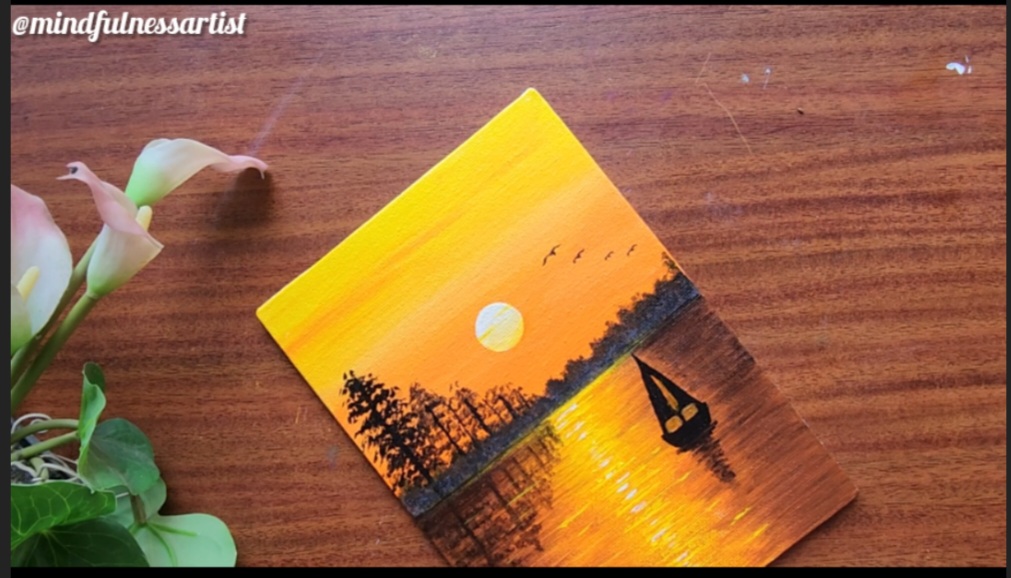
Step 10: Final Review
- Take a step back and look at your painting. Check if you’re happy with the blend of colors, the reflections in the water, and the placement of all the elements.
- Make any final small adjustments you feel are needed to balance the composition and enhance the overall mood of your sunset scene.
